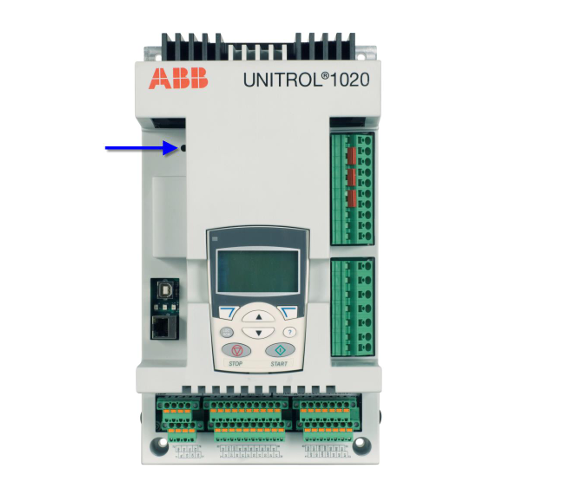The UN1020 device can be operated and controlled in different ways as described in the
rest of this section.
3.3.2.1 Digital and analog IO
The UN1020 can be controlled by means of digital and analog inputs and can therefore set
up several configurations to fulfill most target applications. Digital and analog IO has
highest priority and cannot be overridden by any other controls.
3.3.2.2 Keyboard and Panel Display
REM
100.0% S
AUTO NoLoad
0.00 % UM
0.00 A Ie
SETPNT
12:45
MENU
The 4-line display and the 8 keys allow full operation.
All settings can be carried out directly on the unit without
additional equipment:
Configuration of inputs and outputs
Parameter setting
Display of important measuring values.
The operation of the Panel is described in detail in section
6.3 Panel Operation.
3.3.2.3 Remote Access using MODBUS protocol
The Remote Access feature allows device access and control from local or remote
locations by using MODBUS as application protocol. The communication can be
performed either via RS485 or Ethernet. More information about the connection
possibilities can be found in Chapter 3.3.9 – Communication Ports.
Basic features and advantage of Remote Access
Configuration of parameters and I/O signals.
Measurement reading.
Setpoint adjustment and PID tuning.
Possibility to create a custom application that uses Remote Access to fully control the
device.
Monitor only and full control possible.
The Remote Access feature is fully interoperable with the CMT1000 software; both
interfaces can access and read from the device at the same moment. Control permission
(write parameters) is handled automatically by the AVR microcontroller. The Remote
Access feature is described in detail in Chapter 3.4.6 – Modbus for Remote Access.
It combines performance control and power circuits with a simple mechanical design and provides high performance in a wide range of temperature and vibration conditions.
With built-in dual channel support, advanced load sharing between machines operating in parallel, rotating diode monitoring, automatic synchronizing, and several integrated communication options, this automatic voltage regulator (AVR) is manufactured using the most advanced microprocessor technology and IGBT semiconductors, allowing current output up to 20 ADC for continuous operation.






Leave a comment
Your email address will not be published. Required fields are marked *